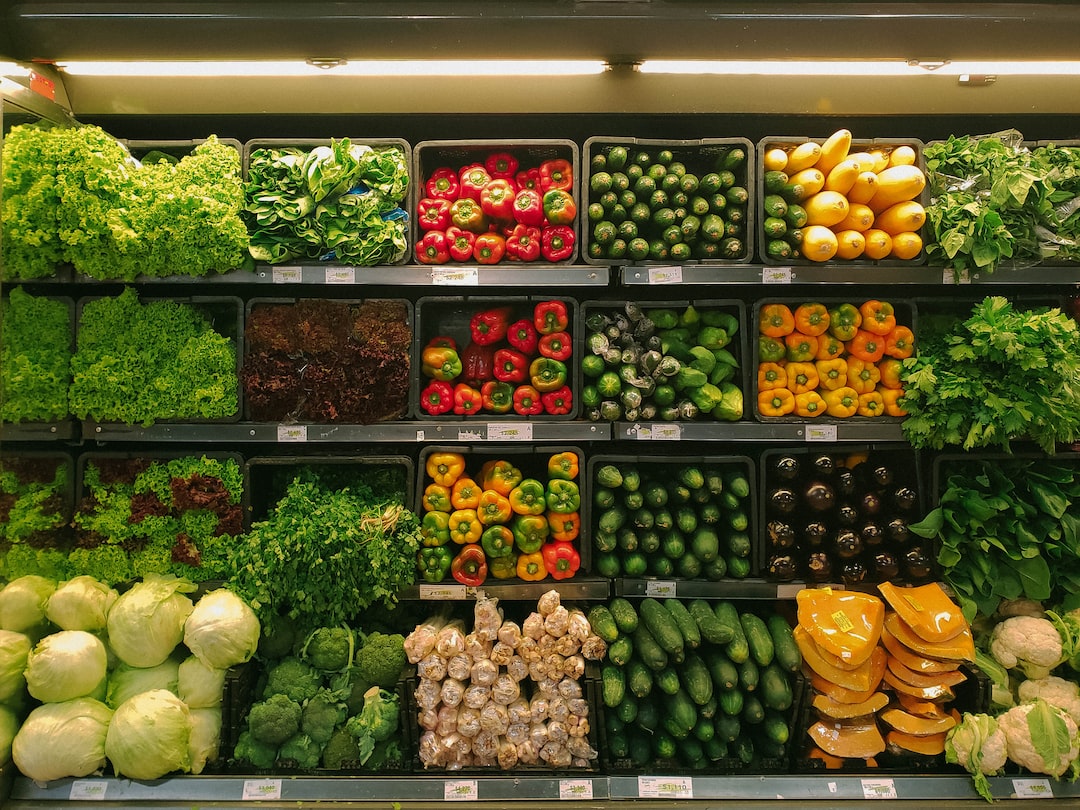How can independent grocery stores adapt to new consumer trends?
Independent grocery stores adapt to new consumer habits

Consumer habits are constantly evolving, with increasing demand for high-quality, sustainable and local products. Customers are also looking for personalized, convenient shopping experiences. Moreover, in today's high-inflation environment, customers are looking for affordable products. Faced with these changes, it is crucial for independent grocery stores to adapt in order to remain competitive and successful. This article aims to present effective strategies for meeting consumer expectations and capitalizing on the opportunities offered by these new trends.
Key takeaway
In the post-COVID19 era, consumers are accustomed to online ordering and expect a simple, intuitive shopping experience. Same-day delivery and 1-click shopping are becoming standard.
Customers are looking for local, affordable and eco-friendly products. Offering niche products that meet these criteria is an important differentiator and growth driver for a business.
It's important to stand out from the competition and build customer loyalty, now more than ever, as inflation is squeezing household budgets. To achieve this, the grocery store must provide a highly personalized shopping experience, for example, by offering educational workshops or dietary advice tailored to consumers' concerns.
Proposer des services en ligne et des options de livraison
Avec la COVID19, la demande pour les services de commande en ligne a explosé ces dernières années.En mettant en place la commande en ligne et les services de livraison, les épiceries peuvent répondre aux attentes des clients tout en offrant un service rapide et pratique. Les plateformes telles que OneTrip facilitent la transition vers le commerce en ligne en aidant les épiceries à créer rapidement une boutique en ligne et à gérer efficacement les commandes et les livraisons. Les avantages de cette adaptation se reflètent tant pour les clients, qui apprécient la facilité d'achat en ligne et la livraison à domicile, que pour les épiceries, qui bénéficient d'une augmentation de leur clientèle et de leur rentabilité.
Élargir les gammes de produits
Contrairement aux grands groupes tels que Métro, Walmart, IGA, les épiceries indépendantes ont la possibilité de se démarquer en proposant des produits biologiques, locaux et durables, répondant ainsi aux préoccupations croissantes des consommateurs en matière de santé et d'environnement. Collaborer avec des producteurs et fournisseurs locaux permet non seulement de soutenir la communauté et d'offrir des produits uniques, mais aussi d'attirer des clients à la recherche de produits de niche ou gastronomiques. Ses produits permettent souvent d'avoir des marges plus élevées que les produits non-spécialisés. En diversifiant leur offre, les épiceries indépendantes peuvent ainsi répondre aux attentes d'une clientèle exigeante tout en renforçant leur position sur le marché.
Créer des expériences d'achat personnalisées

Pour fidéliser leur clientèle et répondre aux attentes en matière de personnalisation, les épiceries indépendantes peuvent mettre en place des programmes de fidélité et des recommandations personnalisées utilisant des algorithmes d'intelligence artificielle. Elles ont certes moins de données que les grandes chaînes, mais elles sont en mesure de mieux adapter leur offre à leur clientèle. Cette personnalisation est un facteur différentiateur fort. Ainsi, l'investissement dans la technologie et l'analyse des données permet de mieux comprendre et répondre aux besoins des clients, en adaptant l'offre et le service en fonction de leurs préférences. En outre, la formation d'un personnel compétent et capable de fournir des conseils adaptés aux besoins spécifiques des clients renforce l'image de marque et l'expérience d'achat dans les épiceries indépendantes. Par exemple une épicerie de produits naturels peut fournir des conseils de naturopathie à ses clients ou encore fournir des conseils en nutrition.
Créer des bundles de produits
La création de bundles ou paniers de produits composés permet de faciliter le processus d'achat pour la clientèle. En très peu de clics, la personne qui magasine est en mesure de placer sa commande. De plus, avec cette approche, l'épicerie est en mesure de créer des bundles de produits très rapidement adaptés au saison et aux tendances du moment ce qui peut prendre un plus de temps à mettre en oeuvre pour les grandes chaînes en raison des processus organisationnels. Les épiceries indépendantes sont peut-être plus petites que les grandes chaînes mais elles ont l'avantage de pouvoir tester rapidement et d'avoir le retour des clients très rapidement. Cette agilité constitue un avantage majeur dans l'adaptation aux nouvelles habitudes de consommation.
Mettre en œuvre des pratiques durables
Afin de répondre aux préoccupations environnementales, les épiceries indépendantes peuvent choisir des fournisseurs qui proposent des emballages écologiques et respectueux de l'environnement. Il est possible aussi pour les commerces d'établir des partenariats avec des compagnies comme To Good To Go qui contribuent à la lutte contre le gaspillage en permettant aux consommateurs d'acheter des produits alimentaires invendus à prix réduit. Ces initiatives permettent non seulement de réduire le gaspillage, mais aussi de séduire les consommateurs soucieux de l'environnement en leur offrant des options durables et abordables.
Utiliser les médias sociaux et le marketing numérique pour atteindre un public plus large
Les épiceries indépendantes doivent tirer parti des médias sociaux et du marketing numérique pour engager les clients et promouvoir leurs offres spéciales. Cependant, les marges dans le secteur de l'épicerie étant traditionnellement plus faibles que dans les autres industries, les commerces doivent cibler des clients se trouvant dans leur niche et dans un secteur local (par exemple un quartier) afin d'avoir moins de compétition des grandes chaînes.
Offrir des options de paiement rapides et flexibles
Pour améliorer l'expérience d'achat et répondre aux attentes des clients, les épiceries indépendantes doivent proposer des options de paiement pratiques et flexibles, telles que les paiements sans contact et les portefeuilles mobiles. La clientèle s'attend à pouvoir commander les produits en 1-clic et désire avoir un processus d'achat sans frictions. Il est aussi possible de mettre en place des options de paiements fractionnées pour les produits dont le prix est élevé en utilisant des services comme Klarna ou encore Sezzle. En facilitant les transactions pour les clients, les épiceries indépendantes renforcent leur image de marque et leur compétitivité sur le marché, tout en encourageant la fidélité de la clientèle.
Fournir des ressources éducatives et des ateliers
Les épiceries indépendantes peuvent renforcer l'engagement de leurs clients en organisant des ateliers et des démonstrations pour éduquer sur une alimentation saine et des pratiques durables. Ces initiatives permettent non seulement de promouvoir les produits locaux, mais aussi de créer une relation de confiance et de proximité avec les clients, en les impliquant davantage dans leur expérience d'achat et en les sensibilisant aux enjeux environnementaux et de santé.
En résumé
Les épiceries indépendantes ont tout intérêt à s'adapter aux nouvelles habitudes de consommation en offrant des services en ligne, en élargissant leur gamme de produits afin d'offrir des produits de niche, en proposant des expériences d'achat personnalisées et en mettant en place et des pratiques durables. Adopter ces changements doit se faire progressivement et peut assurer la croissance dans un environnement d'inflation et de taux d'intérêts élevés.
Découvrez en réservant une démo comment OneTrip peut aider les commerces dans cette transition.
Références
Solocal. "Comment s'adapter aux nouvelles habitudes de consommation post-confinement?https://www.solocal.com/ressources/articles/adaptation-nouvelles-habitudes-consommation-post-confinement"
Banque de développement du Canada."Consumer Trends Report.https://www.bdc.ca/globalassets/digizuite/10336-consumer_trends_report_fr.pdf"
FranceInfo. "Consommation : les grandes surfaces doivent s'adapter aux nouvelles habitudes.https://www.francetvinfo.fr/economie/consommation-les-grandes-surfaces-doivent-s-adapter-aux-nouvelles-habitudes_3789571.html"

